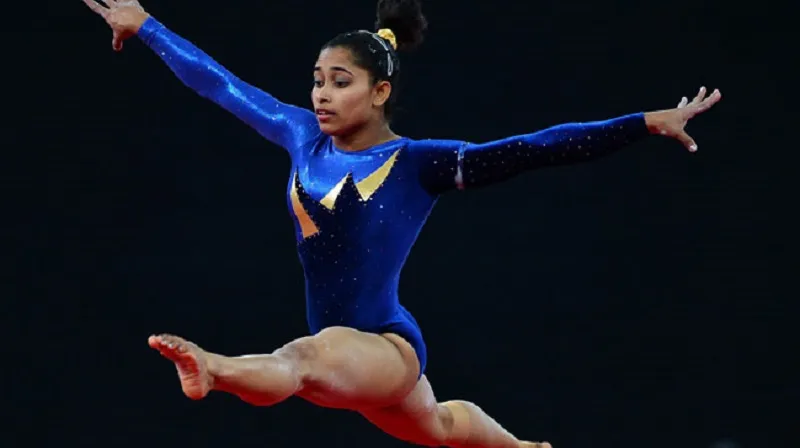Dipa Karmakar could become India’s very own Nadia Comaneci in 2016 Rio Olympics
Romanian gymnast Nadia Comaneci made history when she scored a perfect 10 for her flawless performance in the 1976 Montreal Olympics. Dipa Karmakar has brought the limelight on the sport in India by becoming the first ever Indian gymnast to qualify for the Olympics. Dipa will be representing India in the Rio de Janeiro Olympics in August this year.
Gymnastics is a sport that is a combination of strength, flexibility and control, but above all, has a beauty that is sheer poetry in motion. Dipa’s selection could possibly lead to a revival of national interest in the sport.
Dipa, who hails from Agartala in the North Eastern state of Tripura, was successful in the Final Qualifier and Olympic Test Event in Rio de Janeiro on Sunday, finishing ninth in the first of the four subdivisions of the women’s artistic category. Her first vault, the tough Produnova, gave Dipa 15.066 points, the highest among the 14 competitors. But she could not do as well in the uneven bars and got 11.700 points. Dipa earned 13.366 and 12.566 points in beam and floor exercises. With a strong total score of 52.698 points, Dipa reserved her berth in the Rio Olympics.

The 22-year-old gymnast had missed the boat in the World Championships in Glasgow in November, 2015, as she came in at fifth place and this qualifier event was her last opportunity to find a place in the 2016 Olympics.
Like most gymnasts, Dipa started training at a very young age. Coach Bisbeshwar Nandi has been Dipa’s coach in the sport starting from the tender age of six till today. Dipa’s is a classic underdog story – she has had to overcome several obstacles, including the flat feet she was born with which is not conducive to the sport. So she had to train doubly hard with motivation from her coach and her parents. She was first noticed when she won the Junior Nationals in 2007 at 14 years of age. By 2011, Dipa had won five Gold medals in multiple categories like vault, beam balance, floor and uneven bars.
Her most notable achievement before the representation in the Olympics was becoming the first Indian woman gymnast to win a medal – a bronze – in the Commonwealth Games in Glasgow in 2014. During the Commonwealth Games, Dipa also achieved the distinction of becoming one of only five women in the world to successfully land the Produnova artistic gymnastics vault—one of the most difficult routines involving a front handspring and two front somersaults. She also holds the highest score of 15.100 amongst all five for her attempt. The Produnova (named after Russian Yelena Produnova) is rated 7.00 for difficulty, 8.1 for execution and 0.1 for penalty. It is a risky manoeuvre and can result in grave injury, if done incorrectly. This is especially remarkable since Dipa does not have the kind of infrastructure for training that leading gymnastics teams from countries like Russia and China have.
Recognising the grit behind her journey thus far, Sachin Tendulkar had singled Dipa out for praise at a felicitation ceremony for the contingent to Commonwealth Games. Dipa had also won the bronze at the vault event at the Artistic Gymnastics Asian Championships in Hiroshima, Japan, in 2015.
India’s gymnastics federation does not have the wherewithal to provide training to match international standards and Dipa’s coach Nandi has often spoken about the need for better facilities and infrastructure in the sport.
Here’s hoping that Dipa will get the best possible support from the government and Sports Authority of India (SAI) in the three months left to train for the Olympics, the biggest sporting event in the world.







